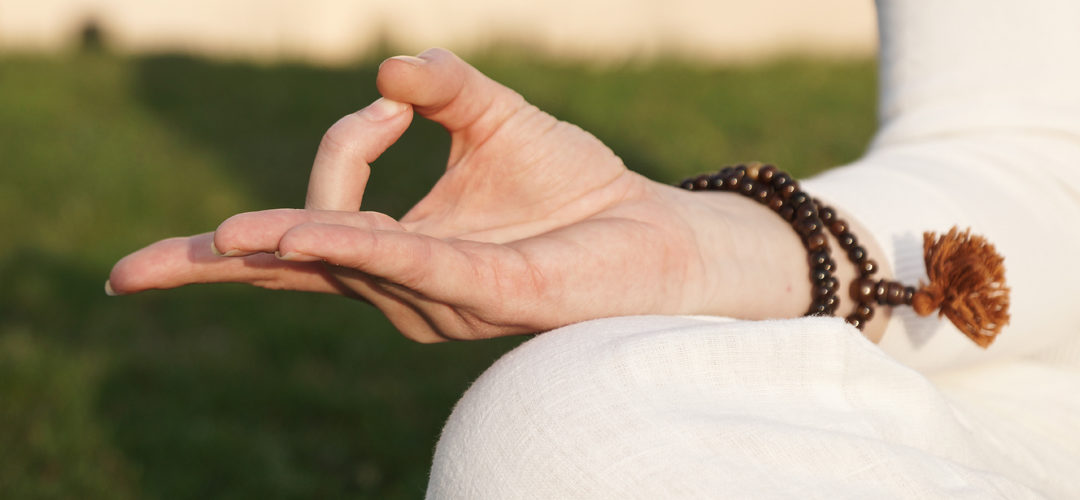Mudra is a Sanskrit word that translates as “seal” or “symbolic gesture”. There are many mudras associated with yoga. They’re formed with the hands or in some cases, the whole body. Using Hasta mudras or “hand gestures” during meditation or pranayama affects the subtle, energetic body on the level of prana, influencing the mind and emotions.
When the hand forms a mudra, a kind of energetic circuit is created within the body’s network of energy channels or nadis. The various mudras form links within the nadis to enhance the flow of prana and influence specific areas of the body and aspects our mental and emotional states for positive, creative change.
Below are a few key mudras and we’ll discuss how they influence and enhance pranic flow during pranayama or meditation.
Chin Mudra (psychic gesture of knowledge)
This mudra is used in either seated meditation or pranayama such as ujjayi. The hands rest on the knees or thighs facing down. This gesture has an integrating and settling effect on the mind as well as a ground effect in the body.
The middle finger, ring, and little finger represent the three classic qualities of all of nature (the Three Gunas). The middle finger symbolizes sattva, (purity, wisdom and true understanding) the ring finger rajas, (action, passion and movement) and the little finger tamas, (inertia, lethargy and darkness). Classically, the yogi is transcends these states, progressing from darkness into light and from ignorance to wisdom.

Jnana Mudra (psychic gesture of consciousness)
In Jnana mudra the hands are placed on the thighs or knees in seated meditation or pranayama with the palms facing up. This mudra gives a feeling of spaciousness and upliftment. In both Chin and Jnana mudra the connection made by the thumb and index figure directs the body’s vital energy to the area of the lungs.

Aadi Mudra (gesture of primal nature)
This mudra is made by curling the fingers around the thumb making a very light fist. It has a soothing influence on the mind and positively influences breathing. Aadi mudra can be very useful in savasana at the end of asana practice to quiet the nervous system, bringing a calming effect to the mind and enhancing a sense of personal security.

Bhairava and Bhairavi Mudra (gesture of the fierce aspect of Shiva and Shakti)
When the right hand is placed on top it is the Shiva aspect, Bhairava. When the left is on top it is Bhairavi, the Shakti aspect. Both positions rest in the lap. These mudras support clarity, truth and our creative intensions.

*Mudras should be held in a relaxed way without tension


Recent Comments